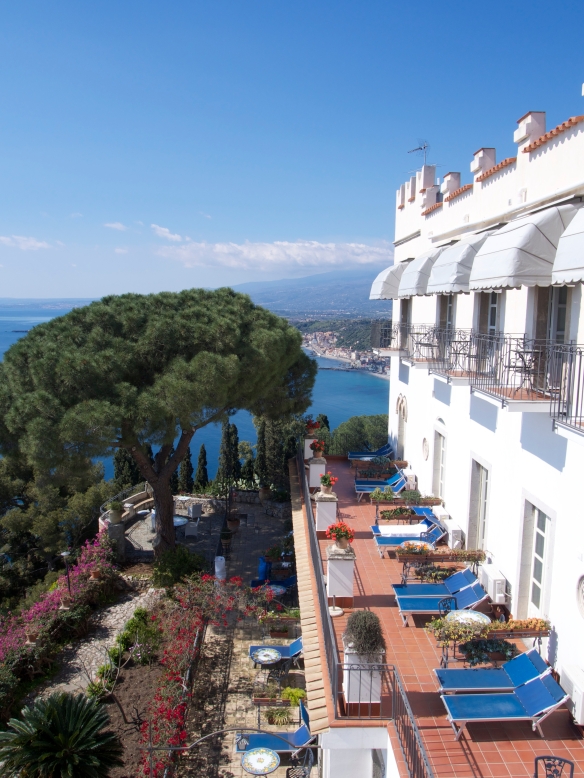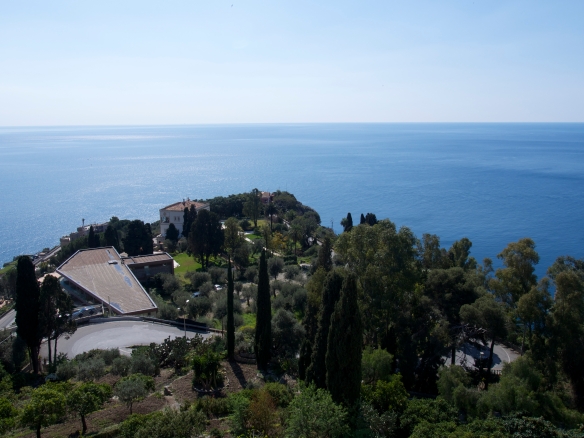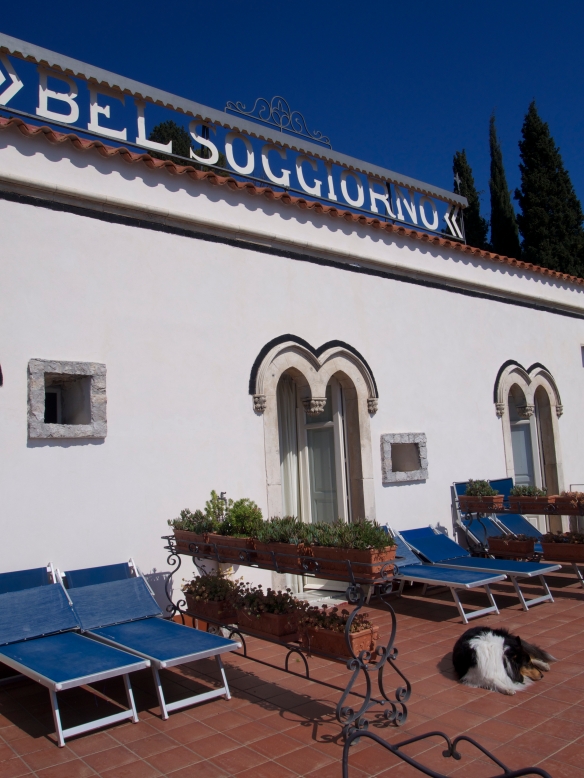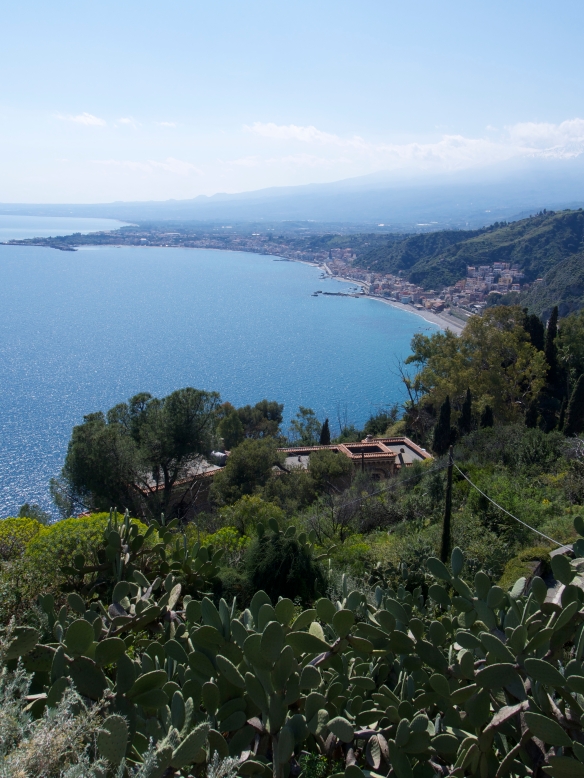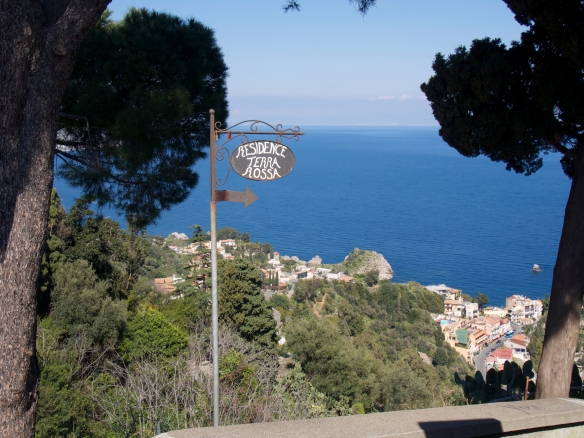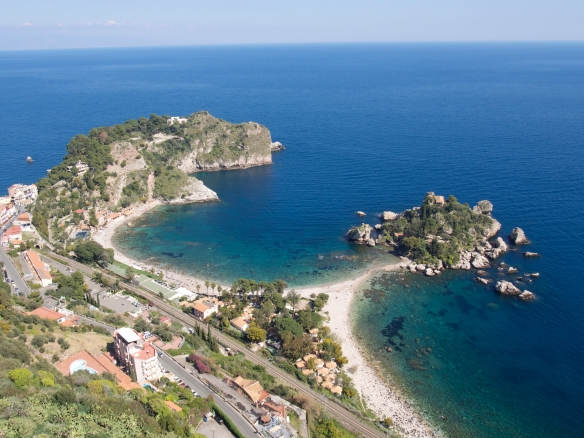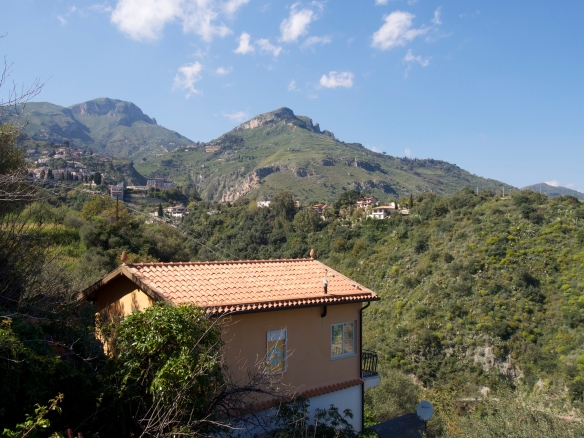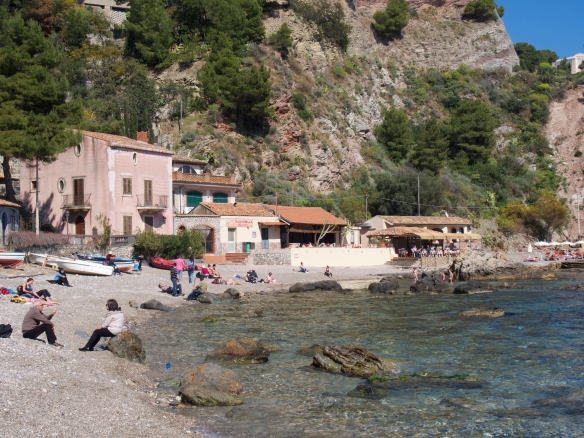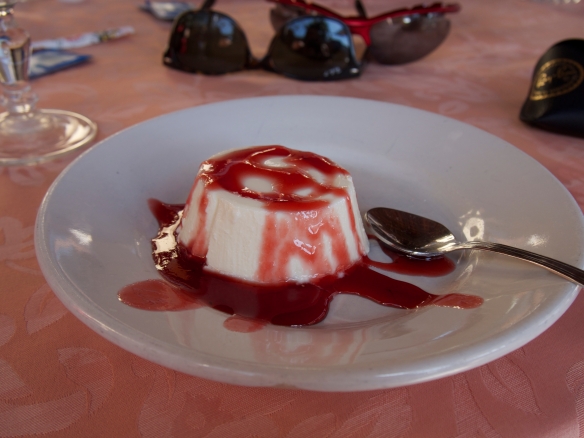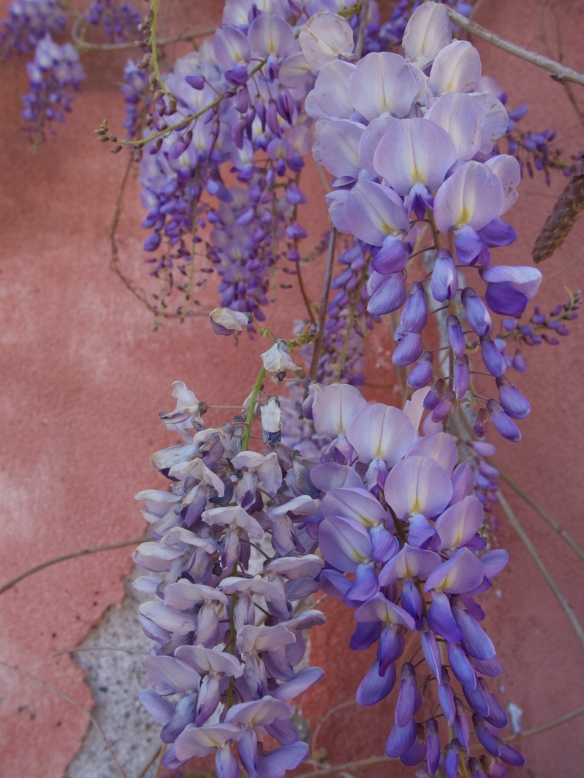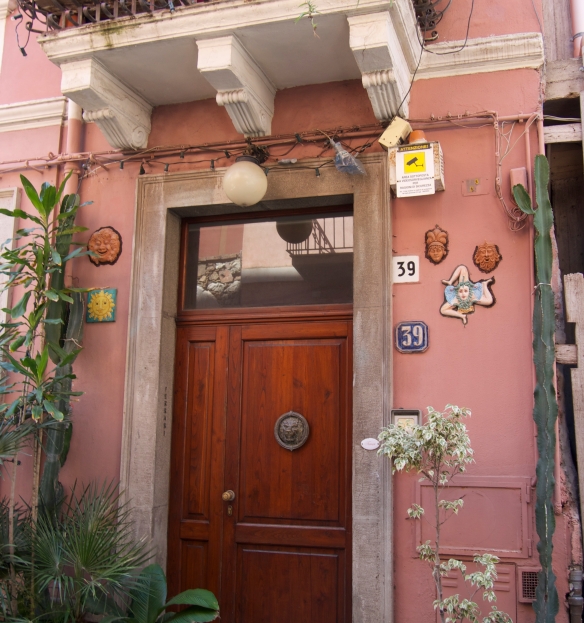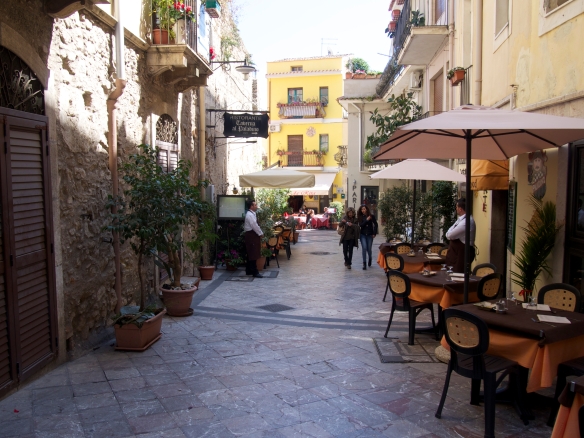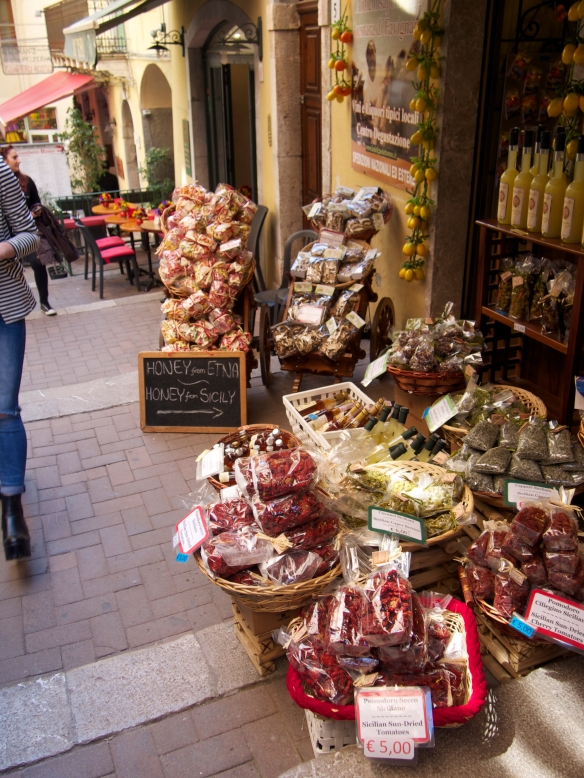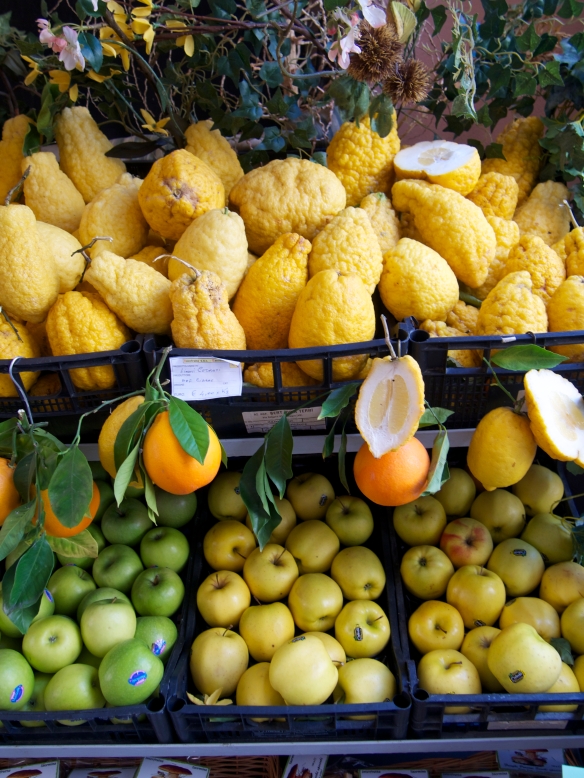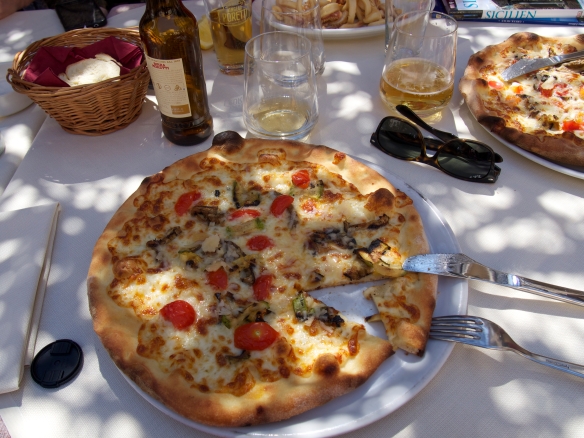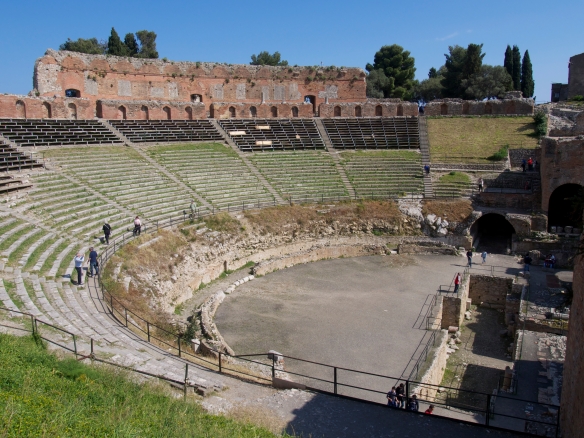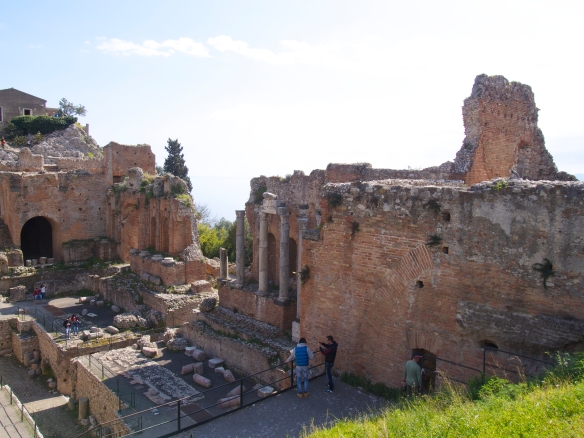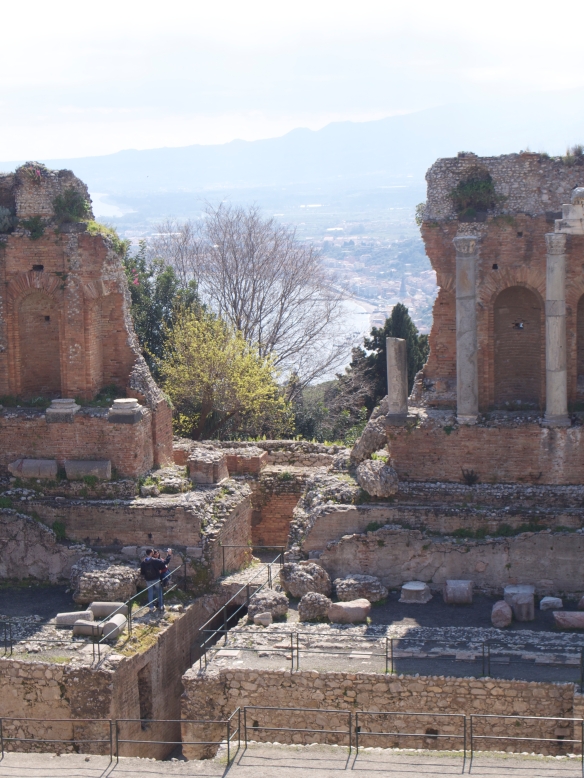As I wake up at home here in Gdansk, getting ready for a typical day of studying, it’s hard to believe that just thirteen days ago I was hiking the igneous rock trails of Mount Etna. From where we were staying in Taormina, Sicily, the peak was in perfect view. I could always see it in the distance, smoking and steaming, huffing and puffing peacefully in the background.
We had a fantastic guide drive us up to take a hike on the volcano. I absolutely adore having a great tour guide– the kind of person who is immensely knowledgeable and more than happy to answer all of your questions (and I always like to ask questions). Our guide Salvo was a native to Sicily. This was evident as he was overflowing with facts and anecdotes about the traditions of volcanology, homemade olive oil, herbal remedies, folk music, and other local charms passed down through the generations.
The landscape from our hike was unlike anything I had ever seen before. As with most natural wonders, words and photographs are inadequate to describe the magnificent vastness of the setting. The great power of Etna is a fierce reminder of how nature rules over us. I was in awe and in wonder of this formidable volcano. It comes as no surprise that ancient Greeks and Romans believed Cyclops, the god of war, resided in the magmatic depths of Mount Etna.
We hiked for a few hours on a trail of crunchy black gravel which was hardened lava. For lunch, we drove to a shaded area in a birch forest and enjoyed sandwiches with local cheese and ham, spicy olives, and wine from grapes grown on the slopes of Etna.
After lunch, we went spelunking. It was my first time exploring caves and it was amazing! We donned helmets and flashlights and descended into a lava tube– a tunnel formed by the physics of cooling lava. After a volcanic eruption, a stream of fluid lava begins to cool first at the top and side surfaces. While this sort of “shell” hardens on the surface, molten lava continues to flow beneath it.
The result is a hollowed out tunnel, which in our case was between about a meter in diameter at its narrowest, up to a few meters when it opened up. This lava tube in particular had been used long ago as a sort of refrigerator for storing ice, which was sold for making gelato in the hot summertime.
We concluded our adventure by exploring one of the craters from which lava had once erupted. I was surprised to learn that although the peak of Mount Etna is open and constantly releasing smoke and steam, most eruptions originate from other sites in the proximity of the peak.
One of the first questions I asked our guide that day was, “How do we know the volcano is not going to erupt today?” I felt safe knowing that there was a team of volcanologists 24/7 monitoring patterns in the seismographs, the chemical composition of the gas rising from the peak, and many other factors to anticipate an eruption. Unfortunately, there is always a slight chance that an anomalous eruption could catch volcanologists by surprise, but the risk was low and we would (probably) have had time to speed away in the van if our guide caught any warning signs.
My day on Mount Etna was by far one of the coolest and most fascinating experiences of my life thus far. I can do little more to describe it with words, so here are some pictures:
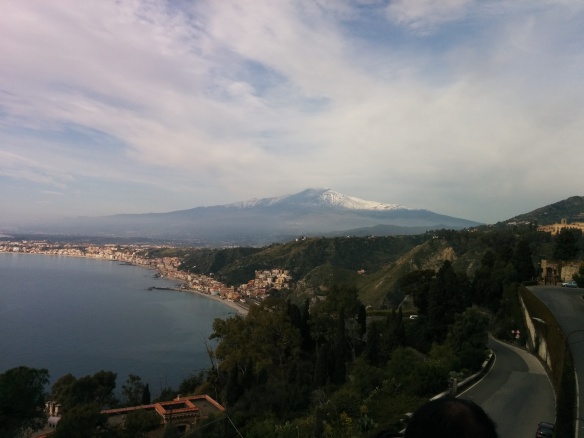
View of Mount Etna in Sicily, the tallest active volcano in Europe. Seen from our hotel in Taormina.
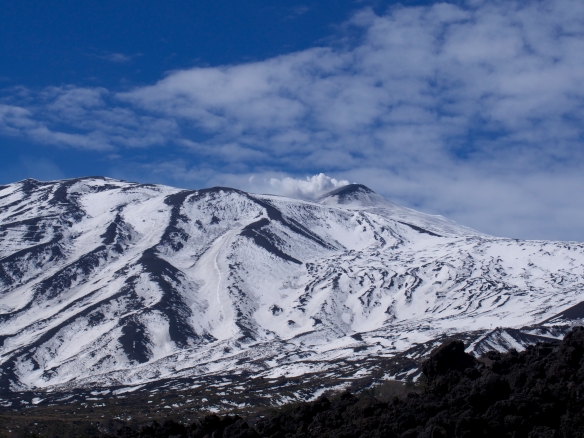
A close-up of the steaming peak of Mount Etna. The lava fields are well visible here, seen as the ridges where molten lava cooled into solid rock.
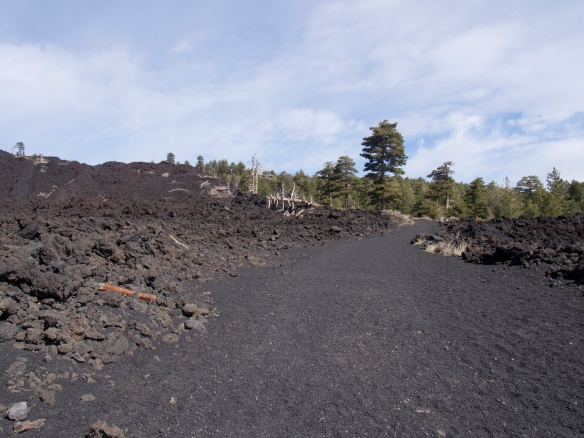
Commencing our hike on the trail of gravel-like lava rocks. Our steps were marked by a muffled crunch, the sound being dampened by the air pockets within each igneous rock.
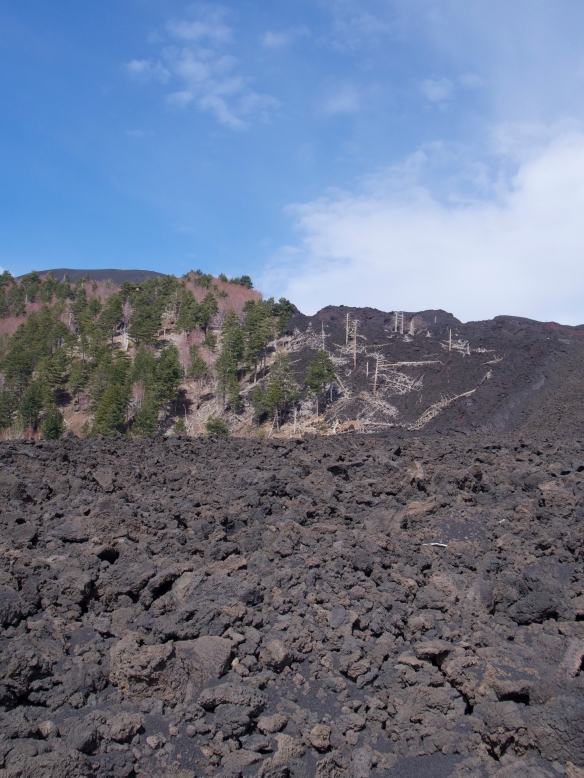
The edge of a lava field from the most recent major eruption, showing the lucky trees that were spared alongside the total destruction in the wake of the lava.
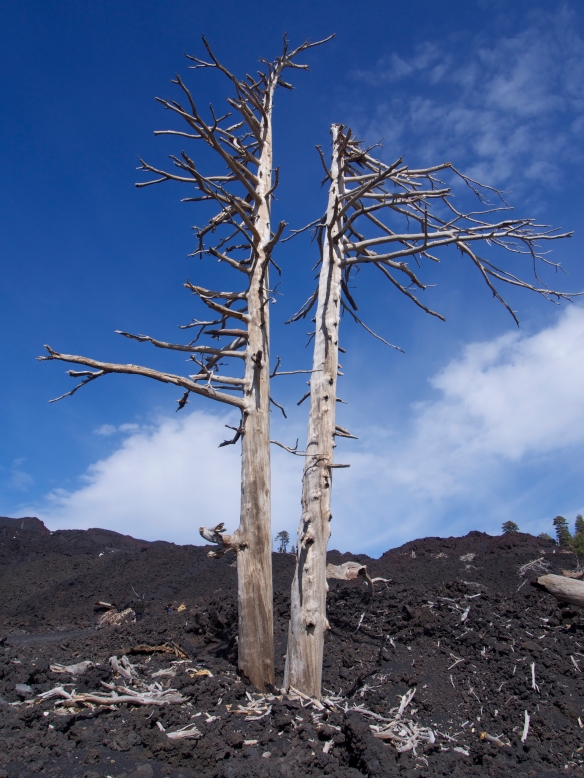
Lava causes different levels of destruction depending on its temperature, which decreases with the distance it has flowed. When lava is at its hottest (up to 1200˚C), it completely obliterates everything in its path, burning it to ash. When lava is “cooler” (still unthinkably hot, as rock becomes molten at a minimum of 700˚C), it might produce the effect seen in this picture. The trees were burned and killed, but the lava flowed around them, leaving them standing.
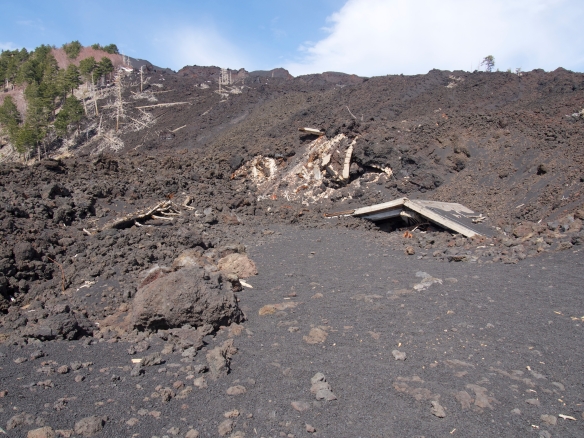
The rooftop of a building which fell victim to the eruption, seen on the right.
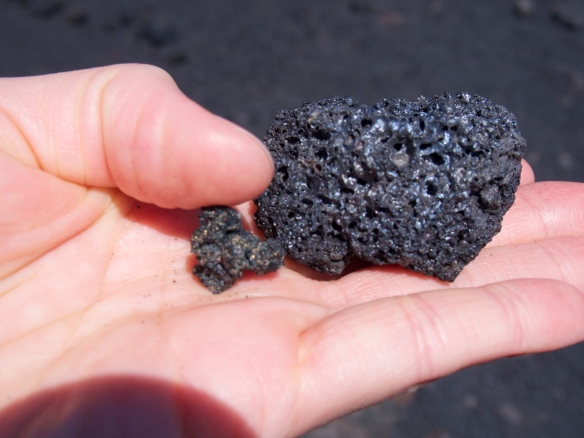
Volcanic rock. The smaller rock on the left contains pyrite giving it shiny tinges of gold, hence its common name as “fool’s gold.”
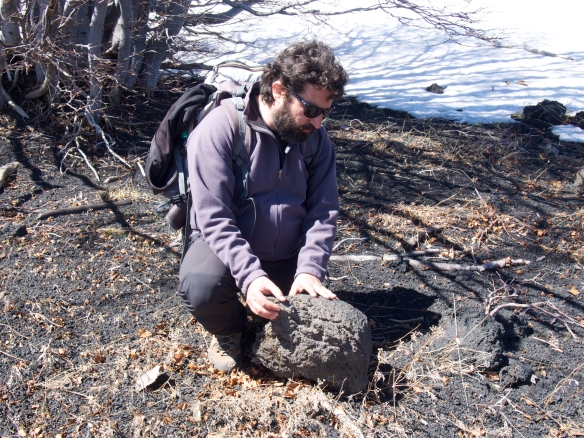
Our amazing tour guide, Salvo, shows us a volcanic “bomb,” one of many rounded rocks which the volcano spits out, which are then thrown through the air during an eruption. As one can imagine, they cause craters of destruction from high impact wherever they land.
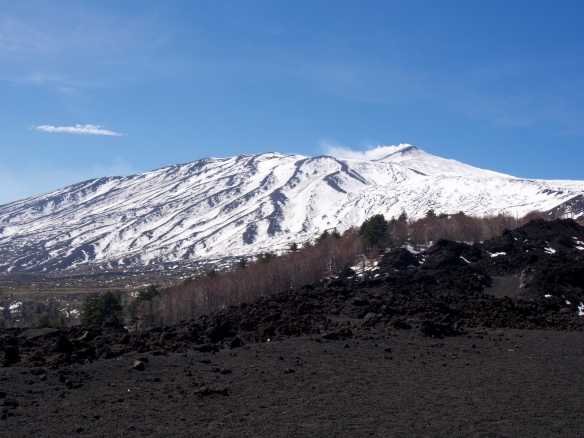
Mount Etna
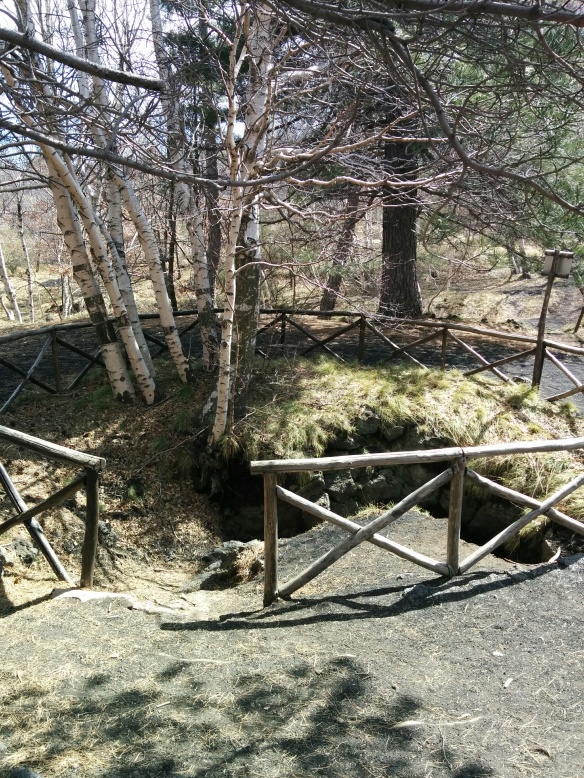
Entrance to the lava tube

